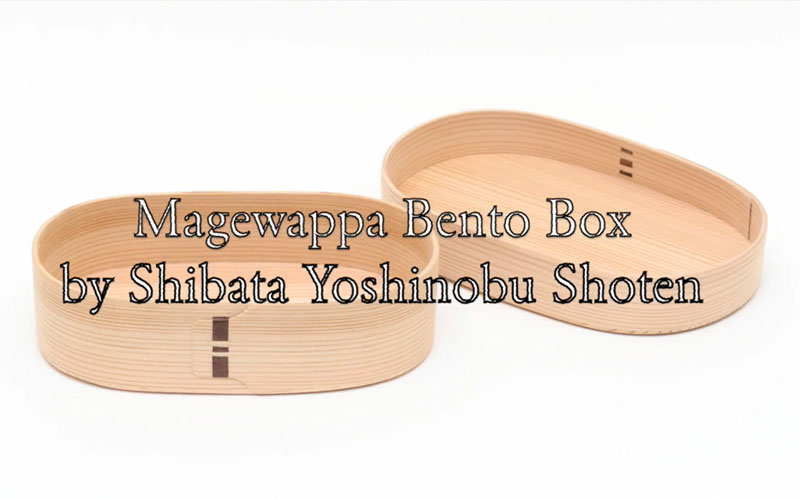
*To watch the video in full screen, please click play and then the YouTube icon on the lower right-hand corner.
Japan’s farming communities, where living in harmony with nature is a way of life, have been the inspiration for the term satoyama. Sato means home or native place, and yama means mountain or woodland, which describes the border zone between mountain foothills and arable flat land that is rich in biodiversity.
Satoyama is now synonymous with sustainability, a philosophy practiced by renowned Japanese Chef Yoshihiro Narisawa. The chef’s eco-conscious cuisine, that he calls “Innovative Satoyama,” includes ingredients from forests and fields. This is featured in the photo exhibition Satoyama: Evolving with the Forest at the JAPAN HOUSE Los Angeles Gallery from June 21—July 29, 2018.
Examples of handcrafted items that speak to this same satoyama philosophy include lacquered dishware by Mokushikko Tokeshi, and cedar magewappa lunch boxes by Shibata Yoshinobu Shoten, both utilizing elements from nature, and produced with sustainable methods.
Mokushikko Tokeshi is owned and operated by lacquerware artisans Hiroyuki and Ai Tokeshi. Located in Okinawa, they are known for their everyday dishware that retains a uniquely beautiful matte finish that prevents and hides damage from daily use. The couple divides production between Hiroyuki crafting the locally sourced wood, and Ai skillfully applying the many required layers of lacquer.
Their training came during their time in the city of Wajima, a different world from their home in tropical Okinawa. Known as one of Japan’s most important lacquerware centers, it is located along the Japan Sea on the Noto-hanto Peninsula in Ishikawa Prefecture. There, the couple learned the painstaking process by which Wajima lacquerware is famous – a long-lasting application of over 70 coats of lacquer. They also learned the decorative method of graving the lacquer surface that is later filled with gold leaf. They have applied this graving method in subtle ways to their modern dishware.
Lacquer is a strong sealant and preserver, and the dishware is known for being waterproof, and resistant to heat and decay. Archeological evidence in Japan shows that lacquer was used to repair and decorate items as early as 6,000 years ago. Pigments from charcoal and cinnabar were added to make a black or bright red color.
The medium is a complex, advanced polymer made from sap (urushi) that oozes from cuts made in the bark of the lacquer tree. The tree grows wild in temperate areas of Japan, but is now mostly cultivated. The sap contains urushiol, the compound that allows the hard lacquer to form. But the toxic oil is so poisonous that when wet can cause extreme rashes. Every lacquer craftsperson must develop an immunity to the poison.
Producing lacquerware is time-consuming and can be extremely costly. One item can require many layers of lacquer and long drying times in between. Adding ornamentation can take up to months to complete. But the results can be phenomenal. Lacquered dishware in particular can have a special softness to the touch and lustrous sheen, making the soup and meal all the more pleasing to the eye and irresistible to the palate.
© WELCOME Co.,Ltd.
Japan’s wide range of crafted wood is due to its abundant forests with many varieties of trees such as bamboo (read about Japan's folktale, “The Tale of the Bamboo-Cutter” or “The Tale of Princess Kaguya,” here), cypress and cedar. One example is the beautiful, straight-grained sheets of cedar used in ‘bent’ woodwork called magewappa.
One of the most famous of these woodcraft artisans is Yoshinobu Shibata and his sons. Their company, Shibata Yoshinobu Shoten is located in the city of Odate, Akita prefecture in northern Japan where magewappa was designated a dentou kougeihin or traditional Japanese craft in 1980.
The craft goes back centuries when Odate area woodcutters used sheets of cedar for making lunch boxes. The practice is said to have inspired a feudal lord in 1602 to encourage his starving samurai warriors to make magewappa as a side job in the aftermath of the Battle of Sekigahara that had divided the nation. Eventually the cedar boxes were carried to many towns and became a popular item.
The secret behind Akita cedar’s dense annual rings is the extremely cold winters when the trees grow ever so slowly, and the straight grain if formed. Known also for its great flexibility and fresh scent, cedar has natural anti-bacterial qualities that help keep food fresh.
In making the megawappa, Mr. Shibata’s small team uses only 100-year-old Akita cedar, and each piece is assembled by hand. Every strip of wood is cut, planed and steamed using simple equipment by one skilled workman. The result is boxes that are thicker and more substantial than machine-made versions. Years ago the wood was secured using thin strips of cherry wood. For durability, the wood is now secured with food-safe glue, and the tree-bark lacing used for decoration.
Along with their popular bento lunch boxes, Shibata Yoshinobu Shoten offers a selection of traditional products such as rice containers. Their modern-style butter containers and bread plates won a prestigious Good Design award.
Lacquerware pieces are said to be symbols of patience and resilience. And like Japanese crafted wood, they are treasured works that combine beauty, strength, and timeless design with practical use.
© WELCOME Co.,Ltd.



